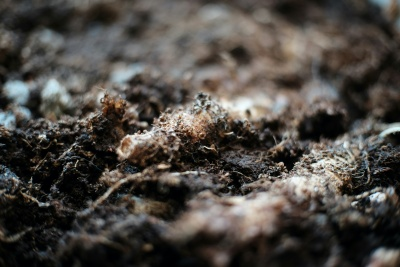Organic pollution is posing a severe threat to the ecological environment and human health. From polycyclic aromatic hydrocarbons emitted by factories to residual pesticides in farmlands, these recalcitrant pollutants act like "ecological tumors." Traditional treatment methods often suffer from multiple drawbacks, such as low efficiency, high costs, risks of secondary pollution, and limited ability to degrade complex organic pollutants. However, Sodium Persulfate has emerged as a highly effective environmental remediation material, demonstrating significant advantages in organic pollution control.

I. The "Chemical Blade" for Pollution Remediation: Activation Principles of Sodium Persulfate
Sodium Persulfate (Na₂S₂O₈) is a white crystalline compound with high stability. In its unactivated state, its oxidizing properties are relatively mild. In the process of pollution remediation, the core mechanism of Sodium Persulfate lies in generating highly oxidizing sulfate radicals (SO₄⁻・) through activation. These radicals can effectively break chemical bonds in organic molecules, such as carbon-carbon bonds and carbon-hydrogen bonds. Under the action of these radicals, various organic pollutants—including benzene series, petroleum hydrocarbons, and chlorinated hydrocarbons—can be gradually mineralized, converted into carbon dioxide, water, and corresponding inorganic ions, thereby achieving effective removal and degradation of pollutants. The Sodium Persulfate products produced by Fujian ZhanHua Chemical, with their stable quality and high purity, provide high-quality raw material support for the efficient generation of sulfate radicals in subsequent pollution remediation processes.
II. Diverse Activation Pathways: Adapting to Complex Polluted Environments
The high efficiency of Sodium Persulfate largely stems from its flexible and diverse activation methods, which can adapt to different types of pollution scenarios:
Thermal activation is one of the most commonly used methods. When the environmental temperature rises, Sodium Persulfate molecules absorb energy and spontaneously decompose to generate sulfate radicals. This method is particularly suitable for treating high-concentration contaminated sites; heating accelerates the reaction rate, enabling a significant reduction in pollutant content in a short time.
Chemical activation exhibits stronger adaptability. Ferrous ions (Fe²⁺) are commonly used activators, which catalyze the decomposition of Sodium Persulfate to continuously generate sulfate radicals. This method does not require high-temperature conditions and can function at room temperature, making it especially suitable for in-situ soil remediation.
Photochemical activation technology offers new ideas for surface pollution control. Under ultraviolet or visible light irradiation, Sodium Persulfate can be directly photolyzed or activated through photosensitization, decomposing to produce sulfate radicals. This method is not only environmentally friendly with no secondary pollution but also can utilize solar energy to reduce remediation costs, showing broad prospects in shallow soil and surface water treatment.
III. Synergistic Remediation Mechanisms: Enhancing Pollution Control Efficiency
In the process of pollution remediation, Sodium Persulfate can form synergistic effects with environmental media and other remediation technologies, further improving remediation efficacy:
In soil remediation, hydroxyl groups on the surface of soil minerals can enrich Sodium Persulfate molecules through adsorption, increasing local agent concentration and enhancing the probability of contact with pollutants. More importantly, the chemical oxidation process can convert refractory macromolecular pollutants into small molecular intermediates that are easily biodegradable. After Sodium Persulfate is consumed and environmental conditions are restored, these intermediates can be further degraded and mineralized by soil microorganisms, thereby realizing the sequential synergy between chemical oxidation and biodegradation for more effective pollutant removal.
For groundwater pollution, Sodium Persulfate can be used in combination with viscosity modifiers or sustained-release materials. By controlling the migration and diffusion rate of the agent in groundwater, the reaction time with pollutants is extended, and the utilization efficiency of the agent is improved. This synergistic regulation strategy can effectively reduce remediation costs and enhance the stability of remediation effectiveness.

Facing the increasingly severe challenge of organic pollution, Sodium Persulfate, with its strong oxidizing capacity, flexible activation pathways, and efficient synergistic mechanisms, has become a key technical support for solving organic pollution problems. It can penetrate deep into core polluted areas and completely decompose stubborn organic pollutants, bringing practical solutions for the remediation of damaged ecological environments. In this process, the high-purity and high-quality Sodium Persulfate products produced by Fujian ZhanHua Chemical provide solid raw material support for the efficient application of various activation technologies, ensuring more stable generation of sulfate radicals and more reliable remediation effects. With the continuous innovation of environmental remediation technologies, the application prospects of Sodium Persulfate will be broader. Fujian ZhanHua Chemical will also continue to contribute to promoting the progress of organic pollution control technologies and safeguarding the ecological environment and human health with its excellent product quality.